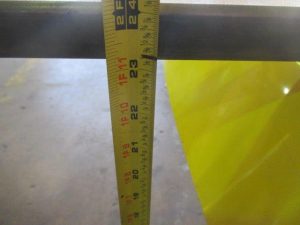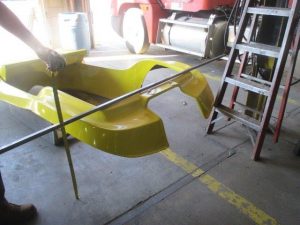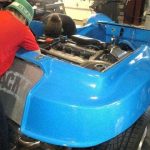What about the computers?
Berrien Buggy/Acme Car Co has formed a technical alliance with our newest GTX dealer, S&S Automotive, who will be doing the reconfiguring on the engine harness, as well as the computers (ECU & TCU).
After you have purchased your donor car and disassembled it, you should ship your engine harness and computers to S&S, including the year and the serial number of your donor car. S&S will work their magic then ship your harness back to you. We are doing this so that the harness will plug into your engine sensors without any problems. GM changed plug configurations throughout the production years, and this method we believe will avoid a mix & match confusion.
Will the body I already have fit the GTX?
If your body was designed to mount on a VW pan that was shortened 14 ½”, and matches the basic physical dimensions of our Nostalgia or Lancer then with some internal fiberglass removal, your body should be able to be mounted on the GTX frame. The critical dimension is the height of the body at the rear of the passenger compartment. This is the area where the struts are mounted, and cannot be changed. Your body needs to be tall enough to clear the rails in that area. To confirm that dimension, sit your bare body on a level floor. Lay a long straight piece across the top of your body at the rear of the rear jump seat. Measure vertically, from the floor to the BOTTOM of the straight piece. The minimum height can be no less than 23 ¼”.


Why a Chevy and not a Subaru or later VW?
The motive for developing the GTX was to provide an automatic transmission in a dune buggy. While the Subaru and VW engines are great engines, when put in a buggy they were still connected to a stick shift transmission, and we saw no way to economically change that. After a great deal of research, we came to the conclusion that the drive train in many of the GM offerings would work in a buggy. They were plentiful as they were offered in a variety of models, they were reasonably priced, especially in a salvage condition, and technical assistance was readily available. Lastly, it fits within the bodies we were already producing.
What does the GTX cost, compared to a traditional buggy?
We believe that at the end of the build the final price will be about the same. While the frame and body costs are higher, A good bit of money can be saved with the cost of a donor car. A good usable VW Beetle donor will cost in the thousands, whereas a Cobalt wreck can be purchased for hundreds. If you do not have a donor VW then the cost of good parts purchased individually is even higher.
Our GTX dealer in Iowa is building a GTX for his personal use. He purchased a wrecked (hit in the rear) 2010 Cobalt for $750.00, it had factory aluminum wheels, and good tires. He spent $125.00 in gas and tolls to pick up the car. After removing everything he needed, including wheels and tires, he sold the remains to a local salvage yard for $250.00. That put his net cost at $625.00, for the engine, transmission, rear suspension & brakes, throttle & shift assemblies, radiator & fans, wheels and tires, wiring harness and computers. So at this point, he is even with or less than a VW build.



